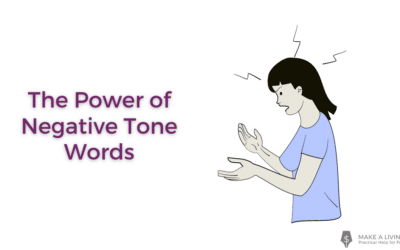Ask any writer their three biggest fears about freelance work, and you’ll hear one word a lot:
Rejection.
It totally makes sense. No one wants to get their freelance work rejected, this fear holds people back.
It’s probably happened to you too.
You’ve seen a job post for freelance work that you know you’d be perfect for, you’ve got the listing up, ready to go. BUT at the deadline, you don’t apply.
You’d love to connect with an editor, BUT your finger just hovers over the Tweet you want to send, afraid. Eventually, you delete it.
You want to raise your rates with a client you’ve been working with for a year. You know you produce work that’s worth more. BUT, every time you sit down to type your request out, you just can’t do it.
Any of these sound familiar?
If the answer is “yes,” it’s ok. We’ve all been there.
But do you really want that to be how your freelancing career ends? Fear of rejection?
I didn’t think so.
That’s why I think it’s so important to do something that’s a little bit weird, embrace rejection.
Here’s how to do it.
1. Start with a rejection mindset
What? That sounds like the opposite of what you’re supposed to do to get freelance work. Well, hear me out.
Rejection is part of every freelance writing business.
But it also stops so many people in their tracks too. I think it’s because the idea of rejection becomes a lot scarier than it is in reality.
So try flipping the script
Instead of being positive you’re going to get a “yes” on everything you send or submit, flip it, assume you’re going to get a “no.”
Realize that in almost every single case, hearing “no” is still ok. It happens. You pick yourself up and move on to the next thing.
But having that little voice in the back of your mind assuming “no” is the answer until it isn’t?
Well, it’s a little mental mindset shift that can pay off.
Here’s what to do: Take the pressure off yourself
When you send out pitches and LOIs, apply for gigs, network, or anything, tell yourself it’s ok to hear “no.”
2. Build your rejection muscles
Now that you’ve got your rejection mindset ready to roll to get freelance work, it’s time to test it out.
To build your rejection muscles, you need to get rejected…
A lot.
Think about something you’re good at in life. Maybe you can:
- Run five miles a day
- Cook an amazing souffle, or
- Lift the biggest kettlebell at the gym…
Unless you were born some sort of prodigy, you had to learn how to do that. And, just like with every single thing you learn in life, you probably messed up or hit setbacks along the way.
The same is true with freelance work.
A lot of people set themselves up for a tough time because they expect themselves to be 100% perfect from day one.
As someone who has been doing this for over a decade, let me tell you, that never happens.
So, might as well get your reps in from the start.
Here’s what to do: Put yourself out there
- Apply for the gigs you aren’t sure you’re qualified for
- Send out tons of LOIs
- Network
- Jump into forums and other writers groups,
- Publish posts that aren’t perfect.
Every time you do that, you’re working your rejection muscles. When something doesn’t work out, brush it off, and move to the next.
This talk from Jia Jiang about “rejection therapy” is an excellent starting point.
3. Figure out your rejection rate to get freelance work
A lot of successful freelancers track the pitches and LOIs they send because it helps get a full picture of where you stand.
You can see what you’ve sent out and what got a response. Once you have a baseline, after a few dozen emails or so, you can start seeing some patterns.
Maybe you’ve got one killer LOI that’s getting a ton of responses. That’s great, use it more! And if you’re hearing crickets, well, that means you’ve got to make some tweaks.
But knowing where you are from the start makes a big difference, and it can help with your rejection mindset.
As you build your freelance writing skills (and your confidence) you’ll have a:
- Better portfolio
- More focused niche
- Short and sweet LOI
Each of those can combine to inching your rejection rate down and getting a lot more yesses.
Here’s what to do: Track everything you send
You can use Google Sheets or a free tool like Airtable. Look at what you send out, and track the response. From there you can start making improvements and lowering your rejection rate.
4. Embrace your inner superhero
What gigs would you apply to if you never worried about getting rejected? What sites would you pitch?
I’d guess they might look a little different from the approach you’re taking now. But here’s another area where rejection matters.
When you start reducing that fear of rejection, it opens up an entire world of possibilities. Suddenly, you’re not going to be motivated by the “no” because it doesn’t matter.
Being so afraid to hear that word isn’t going to hold you back anymore.
When rejection isn’t this big scary thing lurking in the corner, you can start doing some pretty amazing things in life.
And guess what? You might actually start hearing “yes” a lot more, but you won’t know until you give it a shot.
Here’s what to do: Look rejection in the eye once a week
Every week, pick one scary thing that you’ve been putting off; applying to a gig, sending out a pitch, emailing an editor, it doesn’t matter what, pick something.
Then, channel your inner superhero, be brave, and send it out. It won’t take long before these big scary things don’t scare you at all anymore.
5. Be a business owner
Guess what? As a freelancer, you’re a business owner.
So, that means you need to think like one.
Have you ever gone into a store, browsed around for a bit, and walked out not buying anything?
Pretty much everyone has.
But, the store owner didn’t get upset that their store was awful and they should shut it down.
No. They understand it’s business.
Sometimes, a customer will buy, and sometimes they walk away. It’s not personal, it’s just the way things are.
You need to approach your business in the same way. Getting rejected by a potential client is nothing more than a business decision on their end.
All it means is right now, you aren’t a fit. Nothing more, nothing less.
Here’s what to do: Identity opportunities
- Set a time in your calendar a few months from now to follow up with everyone that rejected you who still looks like a good fit.
- Send them an updated portfolio or a new topic or something you just wrote.
That “no” could turn into a “yes.”
Rejection = the path to more freelance work
Getting rejected is hard, but it’s also a part of freelancing. The quicker you learn to overcome it, the better off you’ll be growing your career and landing quality freelance work. I know you can do it.
How do you handle freelance-work rejection? Let’s discuss in the comments.
Sean Ogle is the founder of Location Rebel where he helps people build small businesses that allow them to work from anywhere and spend more time doing the stuff they love.












